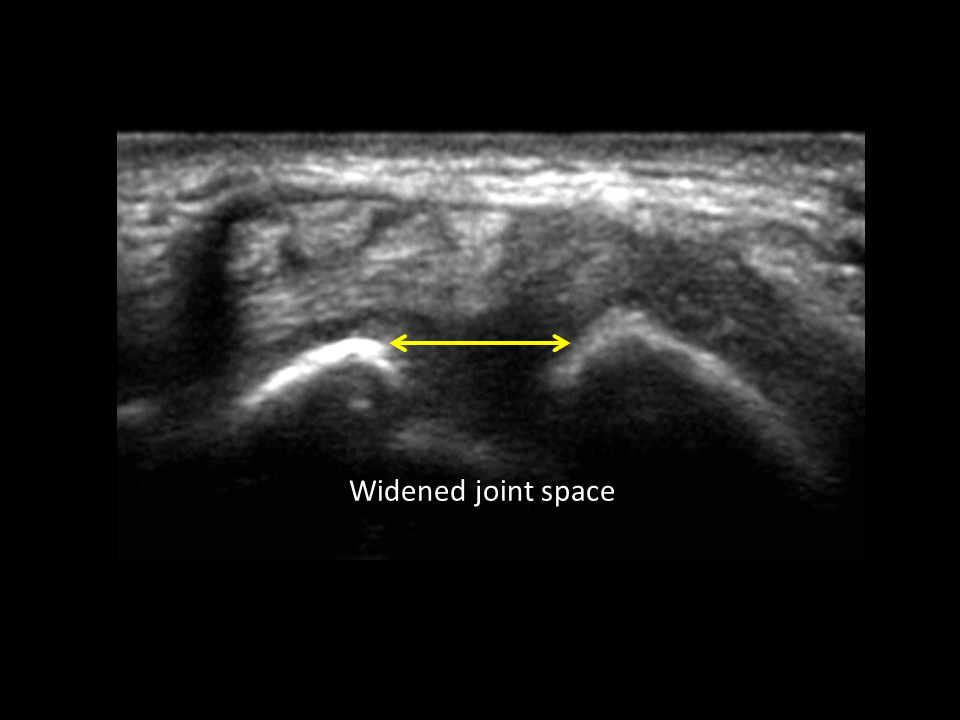Ultrasound Case Study
Scapholunate ligament tear
Robert Mast, Extended Scope Physiotherapist and MSK Sonographer
Ever since then they had noticed an unstable feeling at the wrist. At times when extending from a flexed position the wrist locked. They also reported difficulty picking up a kettle and generally felt less confident when using the wrist.
On clinical examination it was clear that there was dorsal subluxation of a carpal bone, most noticeable when returning from palmar flexion into extension. Palpation of the Lunate bone was very painful. It also seemed to undergo excessive movement during active/passive wrist motion. Ultrasound in clinic showed a very clear dissociation between lunate and scaphoid (see images below). With excessive widening of the joint spaces. Ultrasound examination of this joint during ulnar deviation clearly showed a hypo-echoic void between the dorsal aspect of the scaphoid and lunate (see gallery below). This is very much consistent with a tear of the SLL (Taljonovic, 2007). On the basis of the clinical findings and lack of response to conservative management I referred him to an Orthopaedic hand specialist to further discuss the options.
The Scapho- Lunate Ligament on Ultrasound
The dorsal aspect has been reported to be the most sonographically accessible portion of the Scapho-Lunate-Ligament (SLL) and is visualized, at least partially, in up to 78% of normal wrists (Griffith, 2001). (Figure 1)
Ultrasound is capable of dynamic assessment, but there is no reliable dynamic manoeuvre for assessing the stability of scapholunate articulation (Griffith, 2001). Many sonographers assess the patient’s SLL by means of the passive radial and ulnar deviation of the wrist with the fist clenched. However, this method has been proven to be unreliable (Griffith, 2001). One of the reasons for the low reliability in this test is the difficulty in keeping the transducer accurately on the bony landmark whilst simultaneously ulnar or radial abducting the wrist. In addition, static measurements often vary widely between sonographers.
The Sonographic Squeeze Test:
Recklehoff et al (2013) in their study proposed a novel dynamic manoeuvre that simulates the mechanism of injury. Sonographic exams from 31 consented asymptomatic patients between 18 years and 45 years of age were collected on a total of 60 wrists. The length of the SLL was measured superficially and at a depth of 3.0 mm during static and dynamic squeeze manoeuvre Inter- and intra-examiner reliability was performed using the intra class correlation coefficient (ICC).
The wrist was placed in a bi-valved cast with approximately 45◦ of carpal flexion. A static image of the scapho-lunate joint space and ligament was sonographically captured in the long axis. Immediately after the image was captured and without moving the transducer, the patient squeezed a grip strength dynamometer at 30% of their MVC, and a cine loop image of the SLL during this clenched fist manoeuvre was captured. There was no significant difference between the SLL length at baseline and during a squeeze test at 30% of MVC. The study showed adequate inter- and intra-examiner reliability.
References





0 Comments